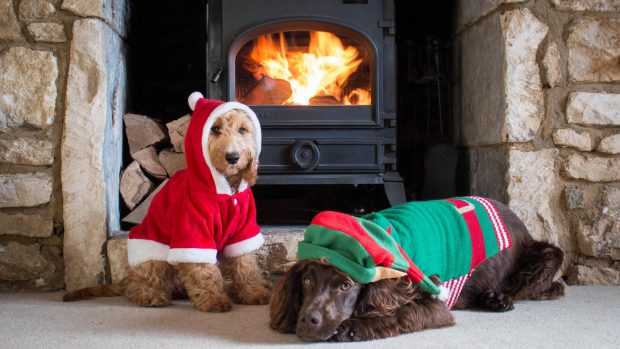There are three main problems in the canine world of behaviour that are forever prevalent with new science and techniques evolving – these are separation anxiety, reactivity and how to recall your dog. Recall is something that can be different for all breeds of dogs and their personalities. Some dogs are over-exuberant and over-friendly dogs, while others are shy, and some have a high prey drive. These different personalities can affect the way recall is taught. One thing that never changes, however, is foundation and consistency. With this in mind, let’s have a look at the whys and wherefores of recall and how lots of little subtle things you do matter.
Why is recall important?
Part of being a responsible dog owner means that in public spaces – including woods, fields and parks – your dog must be under control. You need to be able to recall your dog to put it on a lead in any situation, including the examples below. If you do not have complete control or 100% recall, then your dog must be on lead until such time that it has.
- If you come across a dog on lead. If you see a dog on a lead, your dog should be put on lead – that is the golden rule and it is good manners to keep your dog on the lead until you have passed them. The dog that is on lead is on lead for a reason – either it has no recall, it is reactive, it could be recovering from surgery or simply cannot cope with dogs rushing up to or around them. There is nothing worse than a dog running over to you with no impulse control, no manners, and jumping all over you and your dog, and it’s worse still if the dog is aggressive and attacks you or your dog if your dog is on lead. The most common saying I hear if I am working a reactive dog on lead is “It’s OK my dog is friendly!” Actually, no it’s not OK. It’s also not that dog’s fault – it is the owner’s.
- If you are around livestock. A dog must be placed on lead around livestock and in some rural areas you won’t know about the sheep or cows until you stumble come across them, so it is easy to be caught out. Your dog could be shot if it is worrying or chasing livestock.
- If you meet horses. Plenty of riders take their horse to the beach, to the woods and on various other bridleways where they may encounter dogs. There have been numerous reports of dogs chasing and attacking horses, causing injury not only to the horse but invariably the rider to that is likely to be thrown.
Finally, you obviously need your dog to come back to you, so it is not lost for hours on end or running around causing havoc with cars, knocking over children or older people. We all want our dogs to be dogs, have some time off the lead to run and have fun, but this is only achieved by training and setting behavioural expectations.
How to teach recall
Follow these steps to teach your dog recall. You can start with the very basics in the garden so that your dog understands the commands and expectations. Then move out to areas where you know there will be distractions and practise there until they are returning willingly each time.
1. Set yourself up for success
Make sure you know how to stop your dog pulling and can walk them on a loose lead – you won’t get anywhere if you can’t do this first. You’ll also need to find something that is of high motivational value. I tend to use high-value treats, such as cocktail sausages or cheese, but some dogs are not motivated by food and prefer toys or balls. Use something that’s worth coming back for.
2. Introduce the “close” command
Hold your dog’s lead and, with the motivational treat in front of you, start walking backwards. Say the dog’s name once and then the command “close”, followed by the affirmation “yes”. Repeat this while walking a distance of your choosing, then once at that destination give the dog the reward and repeat several times.
3. Practise “close” off the lead
The next thing to do is drop the lead and repeat the steps as above. If you’re in a class environment and the motivational reward is high enough, your dog will follow you and not run off to their classmates. I have saying – “you do not work for free and neither does your dog, so do not be a stingy employer”.
4. Use restrained recall
In a class environment the next stage is what we’d call restrained recall with distractions, however, this is not possible while you’re on your own or walking your dog in a field or park. You can, however, get a long training line (like this one on Amazon) and do the same thing while there are other dogs around you. If you ask twice and your dog comes back to you without the line going tight then give him the reward. If your dog is still pulling towards the other dog or stimuli, then wind the dog in and repeat step 1 of “close” and “yes” continuously. If you have to wind your dog in after you’ve given the command twice, I would just stroke and say “yes” but not give the reward. Calling three times or more just teaches disobedience, so make sure you act and follow through rather than just repeating yourself.
Remember, a dog can only do as you ask. If you do not ask and teach, then your dog cannot be expected to know what you want and will make the “dog decision”. This is not out of malice or some desire to irritate you, simply because he is a dog and you have not given him the guidance necessary. For example, if you are training in a park and your dog sees another dog then you want him to leave it and come close, right? Therefore, you need to say it. “Leave it”, “close” and “yes”!

Loutep Training Lead | Amazon
This long line is available in eight colours and seven lengths ranging from 3m to 30m.
What to do if your dog stops recalling or gets distracted?
Sound therapy is a stronger notification than your voice and it removes emotion. This can help break a dog’s fixation or impulse to run over to another dog or chase as it is not the voice he hears day in and day out. If a stimulus is too high, coming back to your voice for a treat might not be a strong enough incentive. There are several types of sound therapy that might work for you…
- dog training whistle
- squeaky ball
- shaky bottle
- bleeping collar (sometimes a feature on the best GPS dog trackers)
- metal discs (like these ones on Amazon)
Distinct types of sound therapy may be useful in different situations – for example, you could make a shaky bottle yourself but you may need to be near the dog for it to be effective. If you use a tracker that beeps, you need to introduce it while the dog’s on the lead. You can wind them in if they freeze when they first hear the beep so that they learn that the beep is a no-go zone and that you are the safe zone. These GPS trackers are good in busier areas.

TDL Gun Dog Whistle | Amazon
This whistle has an ultra-high pitch that is more easily heard by dogs’ ears. It gives a solid tone at a single high frequency so that it has the same effect whoever uses it.
Safer Pet Tracker | Amazon
This GPS tracker has a feature that beeps so you can find your dog if he’s near by, but this beep can also be used to train recall.

Trixie Training Discs | Amazon
Shaking these discs or throwing them on the ground is a good way to disrupt a behaviour and gain your dog’s attention.
Dog recall problems
It is never one massive thing that creates a problem with recall, rather lots of smaller things you might not notice. Here are some things that might help…
1. Avoid standing still – when calling your dog always try and move about, either a different direction or back on yourself. You can even hide if it is safe to do so. I find that if you stand still and call their name, even if you use the commands, it is too easy for the dog to hear you, see you and know that you are stood there waiting for them. Make it harder and make them wonder where you are going – then they have the choice of seeing you disappear or going off to the unknown person or dog. It is not foolproof, but coupled with other techniques mentioned above, I have found it successful.
2. Make sure you are giving correct instructions and guidance. Like all things, dog training has peaks, troughs and moments of plateaus when you think you have cracked it, only for it to go backwards. This is normal as dogs go through various stages of growing up too. Remain consistent and go back to basics if your dog regresses.
3. Ensure that the manners and boundaries have not slipped at home or on the lead – if they have, go back to basics until they are established as before.
4. Remember that male dogs (particularly intact ones) can be more difficult if going through a hormone spurt or there is an in-season bitch in the area. This makes it extremely hard for them to focus and concentrate as, sadly, the balls override the brain. They can be so hyper-aroused and alert that they do not even recognise their name, take food, or know what day of the week it is. During these times it is best to revert to basic training again.
5. Have yourself a “toolbox” with a long lead, nice treats and toys, your “yes” voice and a pat/fuss for when they get things right. Mix up tools for different scenarios so that you can get your dog out the fixated zone and get their attention back on you. Practise in various places, take all the tools and figure out what works best for you and your dog. If you are still having issues, call a professional.
You might also like:

Signs, causes and coping strategies for reactivity in dogs – explained by an expert

How to master loose lead walking

Reliable recall: the best whistles to train your dog

Double the fun: how to run with your dog

Subscribe to Horse & Hound magazine today – and enjoy unlimited website access all year round
Horse & Hound magazine, out every Thursday, is packed with all the latest news and reports, as well as interviews, specials, nostalgia, vet and training advice. Find how you can enjoy the magazine delivered to your door every week, plus options to upgrade your subscription to access our online service that brings you breaking news and reports as well as other benefits.




